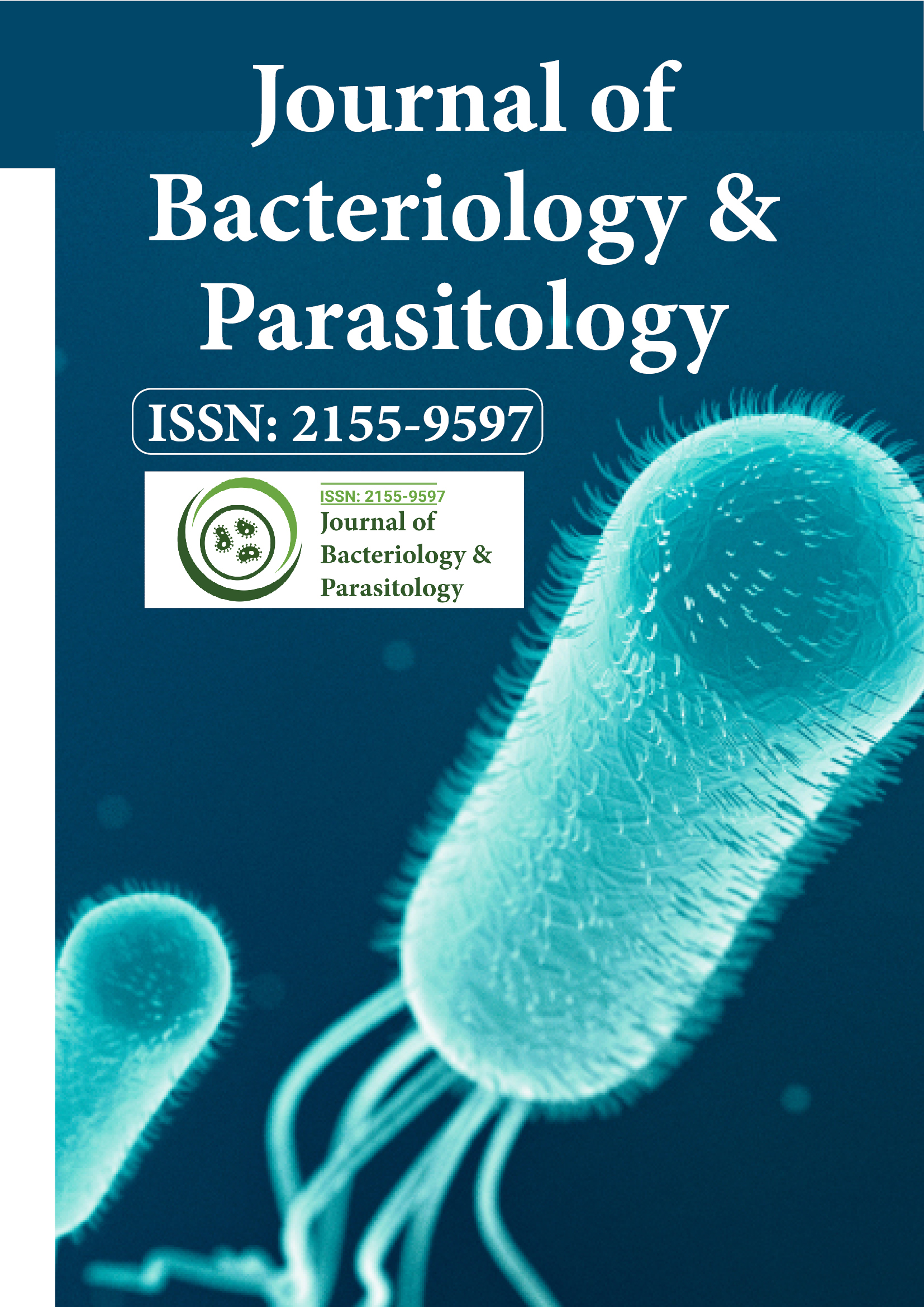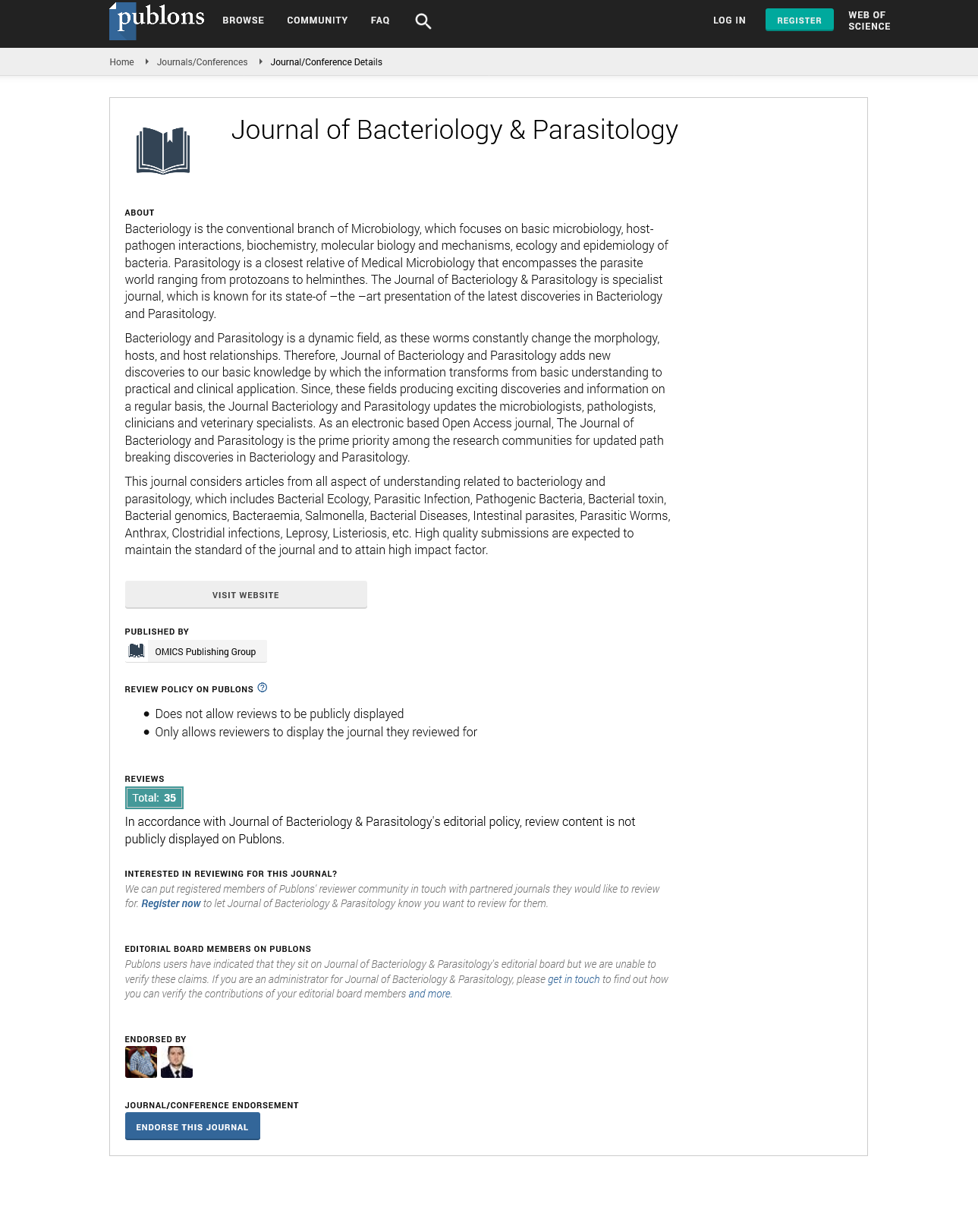Indexed In
- Open J Gate
- Genamics JournalSeek
- Academic Keys
- JournalTOCs
- ResearchBible
- Ulrich's Periodicals Directory
- Access to Global Online Research in Agriculture (AGORA)
- Electronic Journals Library
- RefSeek
- Hamdard University
- EBSCO A-Z
- OCLC- WorldCat
- SWB online catalog
- Virtual Library of Biology (vifabio)
- Publons
- MIAR
- Geneva Foundation for Medical Education and Research
- Euro Pub
- Google Scholar
Useful Links
Share This Page
Journal Flyer

Open Access Journals
- Agri and Aquaculture
- Biochemistry
- Bioinformatics & Systems Biology
- Business & Management
- Chemistry
- Clinical Sciences
- Engineering
- Food & Nutrition
- General Science
- Genetics & Molecular Biology
- Immunology & Microbiology
- Medical Sciences
- Neuroscience & Psychology
- Nursing & Health Care
- Pharmaceutical Sciences
Perspective - (2025) Volume 16, Issue 2
Interactions of Quorum Sensing Bacteria with Protozoan Parasites in Freshwater Ecosystems
Liang Chen*Received: 24-Mar-2025, Manuscript No. JBP-25-29948; Editor assigned: 26-Mar-2025, Pre QC No. JBP-25-29948; Reviewed: 09-Apr-2025, QC No. JBP-25-29948; Revised: 16-Apr-2025, Manuscript No. JBP-25-29948; Published: 23-Apr-2025, DOI: 10.35248/2155-9597.25.16.542
Description
Freshwater systems host complex webs of microbial life. Bacteria often communicate through chemical signals in quorum sensing networks, altering gene expression in response to cell density. These networks regulate factors like toxin production, motility, pigment synthesis, and biofilm formation. Protozoan parasites coâ?exist in such settings, and their survival, reproduction, or infective capacity may be influenced by bacterial signaling. This article examines what is known about how quorum sensing affects protozoan parasitism, and what this means for ecosystem health.
Bacterial quorum sensing involves autoinducer molecules such as acyl homoserine lactones in gramâ?negative bacteria, oligopeptides in gramâ?positive bacteria, and autoinducerâ?2 as a more universal signal. When concentrations reach threshold, bacteria alter behaviours collectively. For instance, they may produce metabolic byproducts or toxins which could damage protozoan membranes or interfere with parasite attachment to host tissues. In one study, bacterial populations with active quorum sensing generated compounds that inhibited Giardia lamblia encystment. By contrast, mutant strains defective in autoinducer production allowed parasite stages to proceed more rapidly.
Protozoan parasites such as Entamoeba, Trichomonas, Blastocystis, and Toxoplasma can encounter bacterial biofilms rich in quorum sensing activity. Within biofilms, autoinducer concentration is high; bacteria may produce lytic enzymes or reactive oxygen species when densely packed. Protozoa swimming in or feeding near biofilms may suffer reduced viability. On the other hand, some protozoa exploit bacterial metabolites — for example, bacterialâ?derived vitamins or coenzymes as nutritional supplements that support protozoan growth.
Temperature, nutrient concentration, and presence of pollutants modify quorum sensing efficacy. Elevated organic carbon enables faster bacterial growth, leading to more rapid buildâ?up of signal molecules. Warm water permits greater diffusion yet also faster metabolic turnover. Pollutants like heavy metals or certain pesticides diminish quorum sensing by interfering with signal receptors or degrading signal molecules. In contaminated freshwater, protozoa may evade bacterial inhibition due to suppression of bacterial communication.
Field investigations in ponds and lakes where eutrophication has occurred record shifts in community composition. Bacteria capable of strong quorum sensing become more common, while susceptible protozoan parasite infections decline among small invertebrates. Laboratory microcosm work confirms that bacterial populations with intact signaling pathways can reduce prevalence of Acanthamoeba cysts in water over time relative to nonâ?signaling controls. Another approach is designing compounds that mimic autoinducers, stimulating bacteria to produce antiâ?parasitic compounds. Care must be taken to ensure that such additives do not themselves disrupt other components of aquatic ecology.
Conclusion
Parasitic disease burden in animals that drink from such waters may alter with these dynamics. For instance, livestock exposed to water containing protozoan parasites may receive lower infective doses when bacterial signaling is high and suppressive. Conversely, if bacterial quorum sensing is perturbed for instance by chemical runoff, antibiotic pollution, or extreme temperature shifts protozoan parasites may multiply unchecked, raising risk. Applications may include development of microbial additives to water systems. Introducing or enhancing populations of bacteria with effective quorum signaling could help control parasite stages. Another approach is designing compounds that mimic autoinducers, stimulating bacteria to produce antiâ?parasitic compounds. Care must be taken to ensure that such additives do not themselves disrupt other components of aquatic ecology.
Citation: Chen L (2025). Interactions of Quorum Sensing Bacteria with Protozoan Parasites in Freshwater Ecosystems. J Bacteriol Parasitol. 16:542.
Copyright: © 2025 Chen L. This is an open-access article distributed under the terms of the Creative Commons Attribution License, which permits unrestricted use, distribution and reproduction in any medium, provided the original author and source are credited.

